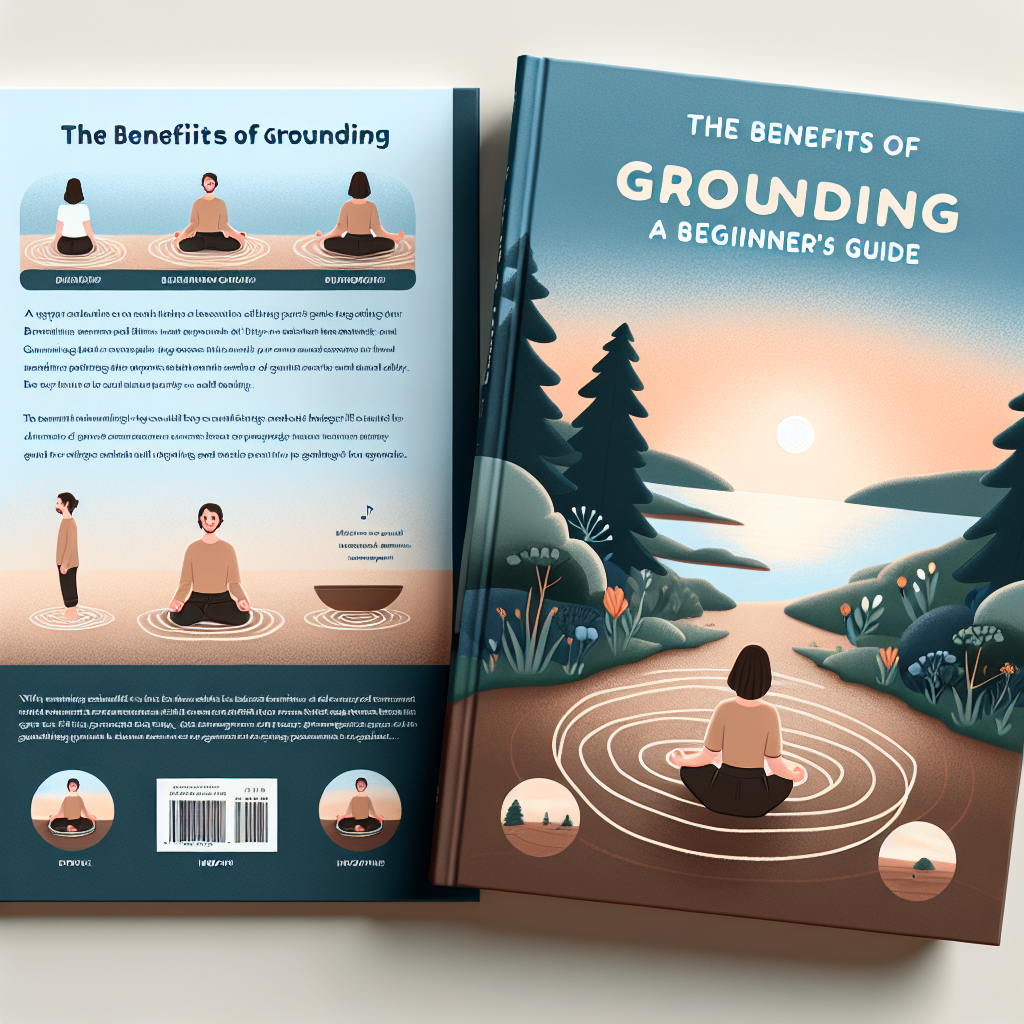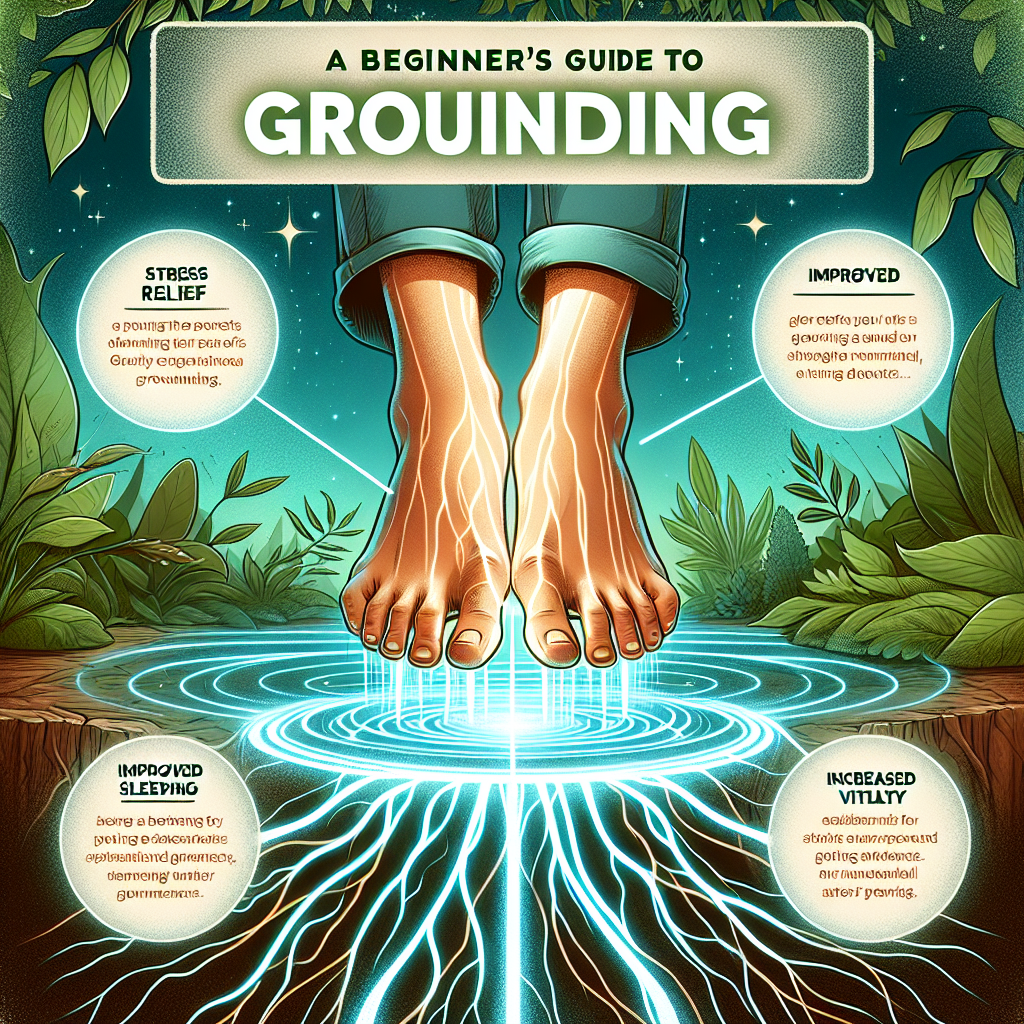The Benefits of Grounding: A Beginner’s Guide

Discover the numerous benefits of grounding by checking out our Beginner’s Guide. Learn how to connect with the Earth’s energy to improve your health and wellbeing. Don’t wait, start your journey to a healthier life today. Click here to get started.
Exploring the Health Benefits of Grounding: A Beginner’s Guide
Grounding, also known as earthing, is a therapeutic technique that involves doing activities that “ground” or electrically reconnect you to the earth. This practice is based on the principle that our bodies are meant to come into contact with the earth on a regular basis. But in today’s world, we often lose this vital connection, leading to a host of health issues. This article aims to explore the health benefits of grounding and provide a beginner’s guide to this fascinating practice.
Grounding is believed to have a multitude of health benefits, ranging from improved sleep and reduced stress to decreased inflammation and enhanced immune function. The earth’s surface is teeming with negatively charged electrons, and when our bodies make direct contact with the earth, these electrons are absorbed into our system. This process is thought to neutralize harmful free radicals and reduce inflammation throughout the body.
One of the most significant benefits of grounding is its potential to improve sleep. Many people who practice grounding report that it helps them fall asleep more quickly, stay asleep longer, and feel more rested upon waking. This is likely due to the fact that grounding can help to regulate cortisol, the body’s primary stress hormone, which has a significant impact on our sleep-wake cycle.
In addition to improving sleep, grounding may also help to reduce stress and anxiety. When we’re stressed, our bodies enter a state of “fight or flight,” which can lead to a host of health problems if sustained over time. Grounding is thought to help shift the body into a more relaxed state, known as “rest and digest.” This can lead to a reduction in stress hormones, a slower heart rate, and a sense of calm and well-being.
Furthermore, grounding has been linked to a reduction in inflammation, which is at the root of many chronic diseases. Inflammation is essentially an overreaction of the immune system, and it can lead to a host of health problems, from heart disease and cancer to arthritis and Alzheimer’s. By neutralizing harmful free radicals, grounding may help to reduce inflammation and support overall immune function.
While the health benefits of grounding are impressive, it’s important to note that more research is needed to fully understand this practice. However, the existing research, along with countless anecdotal reports, suggests that grounding may be a simple and effective way to improve health and well-being.
So, how can you start grounding? The simplest way is to spend time barefoot outside. Walking on the beach, gardening, or even just sitting in a park with your feet on the grass can all help to ground you. If you’re unable to spend time outside, there are also grounding products available, such as grounding mats and sheets, that can help you reap the benefits of grounding from the comfort of your own home.
In conclusion, grounding is a therapeutic technique that has the potential to improve sleep, reduce stress and inflammation, and enhance overall health and well-being. While more research is needed, the existing evidence suggests that this simple practice could have profound health benefits. Whether you choose to walk barefoot in the park or use a grounding mat at home, grounding is a practice worth exploring.
Understanding the Science Behind Grounding: A Comprehensive Guide for Beginners

Grounding, also known as earthing, is a therapeutic technique that involves doing activities that “ground” or electrically reconnect you to the earth. This practice relies on earthing science and grounding physics to provide a plethora of health benefits. As a beginner, understanding the science behind grounding can be a bit complex, but this comprehensive guide will help you grasp the concept and its benefits.
The science behind grounding is rooted in the basic principles of physics and biology. The earth has a mild negative charge, and over time, our bodies, which conduct electricity, build up a positive charge. This positive charge can lead to inflammation and disease. Grounding neutralizes this positive charge, returning the body to a balanced state.
The process of grounding involves direct skin contact with the surface of the earth, such as walking barefoot on the grass or sand. This contact allows the body to absorb negative ions from the earth, which helps to neutralize the positive ions and reduce inflammation. The concept is similar to the idea of antioxidants neutralizing harmful free radicals in the body.
Grounding has been studied extensively, and research has shown that it can have significant health benefits. A study published in the Journal of Environmental and Public Health found that grounding could improve sleep, reduce pain, and decrease stress and tension. Another study in the Journal of Inflammation Research found that grounding could reduce or prevent the symptoms of inflammation-related health disorders.
The benefits of grounding are not just limited to physical health. Grounding can also have a positive impact on mental health. The act of connecting with nature and focusing on the sensation of the earth beneath your feet can be incredibly calming and grounding. This can help to reduce stress and anxiety and promote a sense of peace and well-being.
Despite the numerous benefits of grounding, it’s important to approach it with a balanced perspective. While grounding can certainly contribute to overall wellness, it should not be used as a substitute for medical treatment for serious or chronic conditions. Always consult with a healthcare professional before starting any new health regimen.
In conclusion, grounding is a simple and natural way to improve your health and well-being. The science behind it is fascinating, involving the basic principles of physics and biology to neutralize the body’s positive charge and reduce inflammation. The benefits of grounding are numerous, from improved sleep and reduced pain to decreased stress and tension. However, it’s important to remember that grounding is a complement to traditional medical treatment, not a substitute. As a beginner, starting with short grounding sessions and gradually increasing the duration can help you experience the benefits of this practice. So, why not kick off your shoes and give grounding a try? You might be surprised at how good it makes you feel.
Grounding Techniques and Their Wellness Advantages: A Guide for Beginners
Grounding, also known as earthing, is a therapeutic technique that involves doing activities that “ground” or electrically reconnect you to the earth. This practice is based on the idea that our bodies are meant to come into contact with the earth on a regular basis. Positive electrons in the form of free radicals can accumulate in our bodies and direct contact with the ground balances this out as it is a negative grounding charge.
Our ancestors had a direct connection with the earth, walking barefoot and sleeping on the ground. But modern lifestyle, including the use of insulative rubber or plastic-soled shoes, has disconnected us from this primordial grounding, potentially causing a myriad of health issues. Grounding techniques are designed to reconnect us to the earth, improve our wellbeing, and bring numerous health benefits.
One of the simplest grounding techniques is walking barefoot outside. This can be done on grass, sand, or even concrete. The key is to have direct contact with the earth. Walking barefoot allows the body to absorb negative ions from the earth, which helps to neutralize free radicals and reduce inflammation.
Another grounding technique is swimming in the sea or a lake. Water is a great conductor of electricity, and swimming allows for a full-body grounding experience. This can help to reduce stress, improve sleep, and increase energy levels.
Grounding mats and sheets are also available for those who find it difficult to spend time outdoors. These products are made with conductive materials that mimic the effects of grounding. They can be used while sleeping, working, or relaxing at home.
The wellness advantages of grounding are numerous. Research has shown that grounding can improve sleep, reduce inflammation, and increase energy levels. It can also help to reduce stress and anxiety, improve cardiovascular health, and boost the immune system.
Grounding can also have a positive effect on the body’s bioelectrical processes. Our bodies operate electrically, and grounding can help to keep these electrical signals in balance. This can improve the functioning of all our body’s systems and processes, from digestion to cognition.
Furthermore, grounding can help to improve mood and mental clarity. The negative ions absorbed from the earth during grounding can help to increase serotonin levels, which can improve mood and reduce stress. Grounding can also help to increase mental clarity by reducing the effects of electromagnetic fields (EMFs) from electronic devices.
In conclusion, grounding is a simple and effective way to improve your health and wellbeing. Whether you choose to walk barefoot outside, swim in a natural body of water, or use a grounding mat or sheet, the benefits of grounding are clear. From improved sleep and reduced inflammation to increased energy levels and improved mood, grounding is a wellness practice that everyone can benefit from. So why not give it a try? You might be surprised at how good you feel.